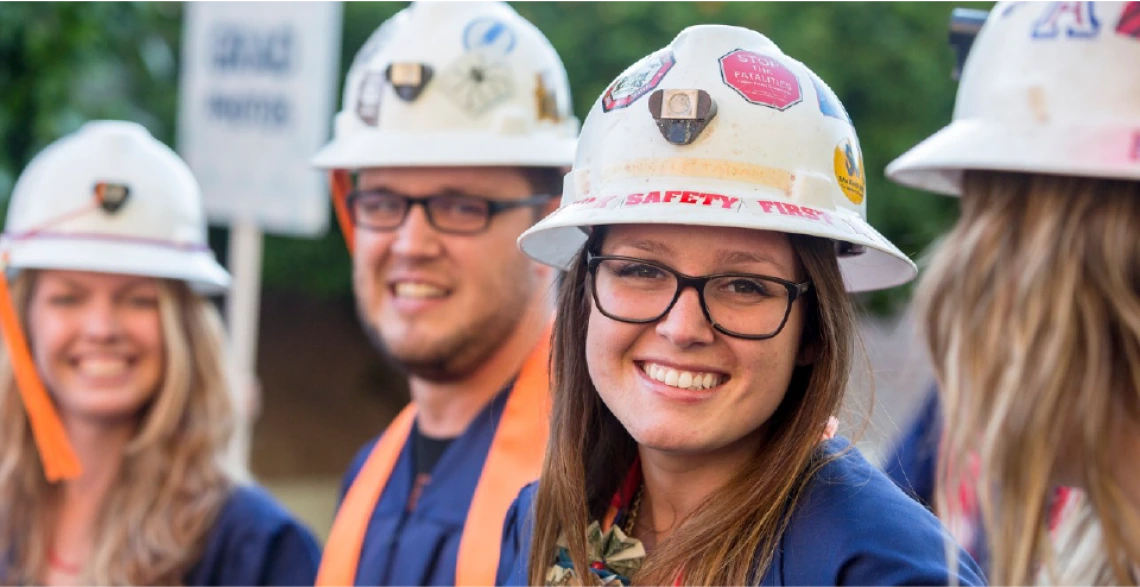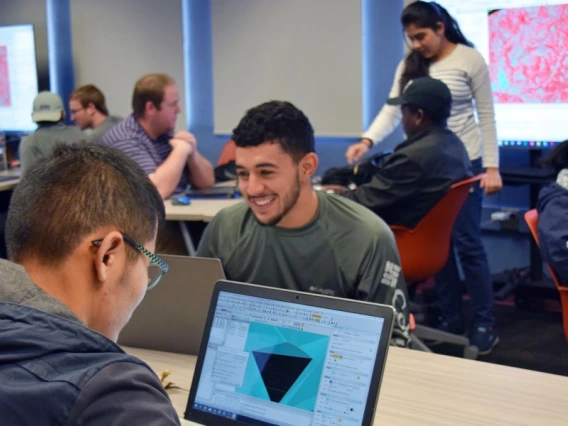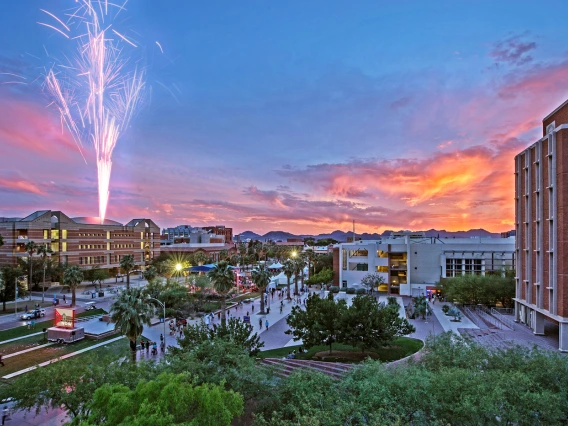Arizona State Legislature Approves $4M in Ongoing Yearly Funding for School of Mining and Mineral Resources
The funding is geared to building a highly educated workforce prepared to meet some of the world’s most pressing technological needs around mineral resources.

No description provided
About 45,000 jobs in Arizona are connected to mining in some way. Further, many top industries, such as aerospace, manufacturing, technology, health care and renewable energy rely on Arizona’s minerals, particularly copper. Copper is used everywhere, from electronics and electric vehicles to building materials, and it is constantly in high demand worldwide. That makes Arizona, which produces three-fourths of the nation’s copper and is the sixth-largest producer in the world, a key player in the global economy.
It also makes the University of Arizona one of the primary pipelines to employment in the state’s mining sector. That’s one big reason the colleges of Engineering and Science established the School of Mining and Mineral Resources in 2021. The school is poised to advance sustainable practices, safety and automation, and boost Arizona’s economy. The 2022 Arizona state budget allocates $4 million in yearly ongoing funding for the school. The funding is part of the New Economy Initiative, which targets high-value workforce development at the state’s three public universities
“This investment was one of the most important issues to me this session,” said David Gowan, senate appropriations chair and sponsor of the school’s appropriation bill. “Mining is one of Arizona’s main industries that contributes to our state’s and country’s rapid population growth and economic prosperity. Mined resources are required to create roads, hospitals, vehicles, houses and computers; to generate power; and to offer the many other goods and services that consumers need in today’s technological world.”
Just as the demand for minerals stretches across many sectors, the knowledge required to do mining comes from a number of areas. Thus, the school will take an interdisciplinary approach, drawing from expertise not just in engineering and science, but also in law, business, social sciences, public health and other disciplines.
“Funding for the school will establish the University of Arizona as a world leader in training the next generation of mining and mineral resource professionals,” said Carmala Garzione, dean of the College of Science. “The school will bring together researchers and practitioners from a wide range of related disciplines to solve challenging and timely societal issues related to resource limitations and sustainable mineral resource practices.”
The funding will go toward hiring faculty and staff as well as recruiting and retaining students. It also will help improve laboratories and facilities, including the student-run Henry G. “Hank” Grundstedt San Xavier Underground Mining Laboratory, the only underground mining laboratory in the United States with a working vertical shaft.
“This funding is critical to fulfilling our vision of establishing southern Arizona as the Silicon Valley of mining,” said David W. Hahn, the Craig M. Berge Dean of the College of Engineering. “With its globally recognized teaching and research enterprise, and through close collaborations with government and industry, the University of Arizona will be leading the way on a school that impacts every facet of the mining industry. It was very satisfying to see the close cooperation between legislators, UArizona leadership, and the state’s mining industry to make this support a reality.”
In addition to the state funding, the university has received $6.5 million in donations for the school, and there is broad support from industry.
“Society’s future ability to address climate, technological advancements and overall demand begins with mining,” said Steve Trussell, executive director of the Arizona Rock Products Association and the Arizona Mining Association. “Our ability to extract minerals and materials responsibly for the economy of the future is contingent upon a highly trained and competent workforce. The state’s investment in future workforce for the industry will further elevate the ability of UArizona – a world leader in engineering, environment, geoscience, and health and safety – to address the increasing need for production of critical minerals and materials.”
UArizona’s mining engineering program is one of only 13 in the nation sanctioned by the Accreditation Board for Engineering and Technology Inc., and U.S. News & World Report ranks the university's geosciences graduate program as third in the United States among geology graduate programs. The university is also home to the Lowell Institute for Mineral Resources, which advances scientific, technological and educational aspects of mineral discovery, extraction and processing.
“We are very grateful to Governor Ducey and the Arizona legislature for their support of this school, and ultimately for one of the top industries in Arizona,” said University of Arizona President Robert C. Robbins. “The University of Arizona’s combination of faculty expertise, highly regarded programs, motivated students and geographic location mean it is perfectly positioned to educate a workforce for the mining industry of the future.”
Because mined materials contribute in so many ways to day-to-day living, a modern mining workforce goes beyond reinforcing the foundations of our economy. This workforce will efficiently and sustainably harvest the materials needed to build those technological foundations.
“My hope is that the school will develop new talent and generate high-skilled individuals who will contribute to further innovation of the industry in our state,” said Gowan. “This is a major step in providing opportunities for students who will set Arizona apart from the rest and make us stay competitive in this job market. I am looking forward to seeing the success of the School of Mining and Mineral Resources at the University of Arizona."



